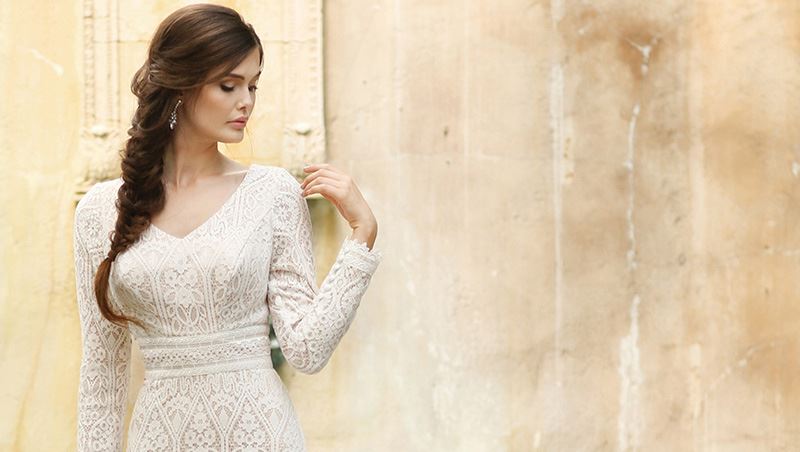The Ultimate Guide to Wedding Dresses
You’ve found the love of your life, the sparkly ring bling, and maybe even a wedding date and venue— now what? Wedding dress shopping! Well, we’ve got you covered. With this comprehensive guide, you’ll feel like a pro when you walk untie a bridal shop. Let’s do this!
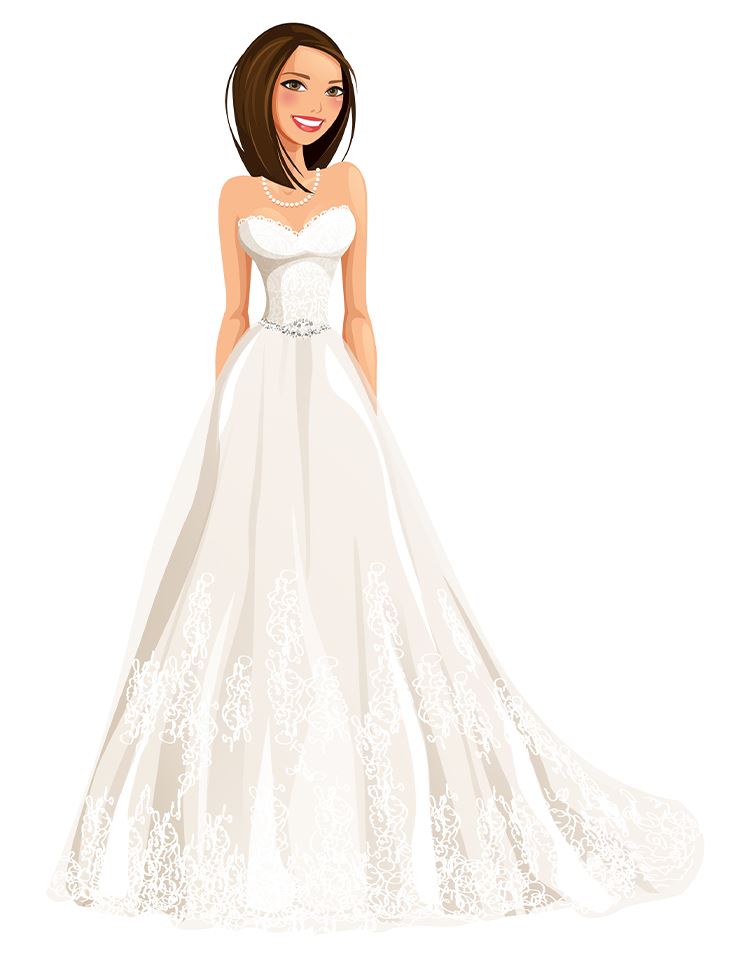
Dress Silhouettes
A-Line
A narrow bodice, nipped in waist and an A-shape skirt that gradually widens towards the hem. Universally flattering!
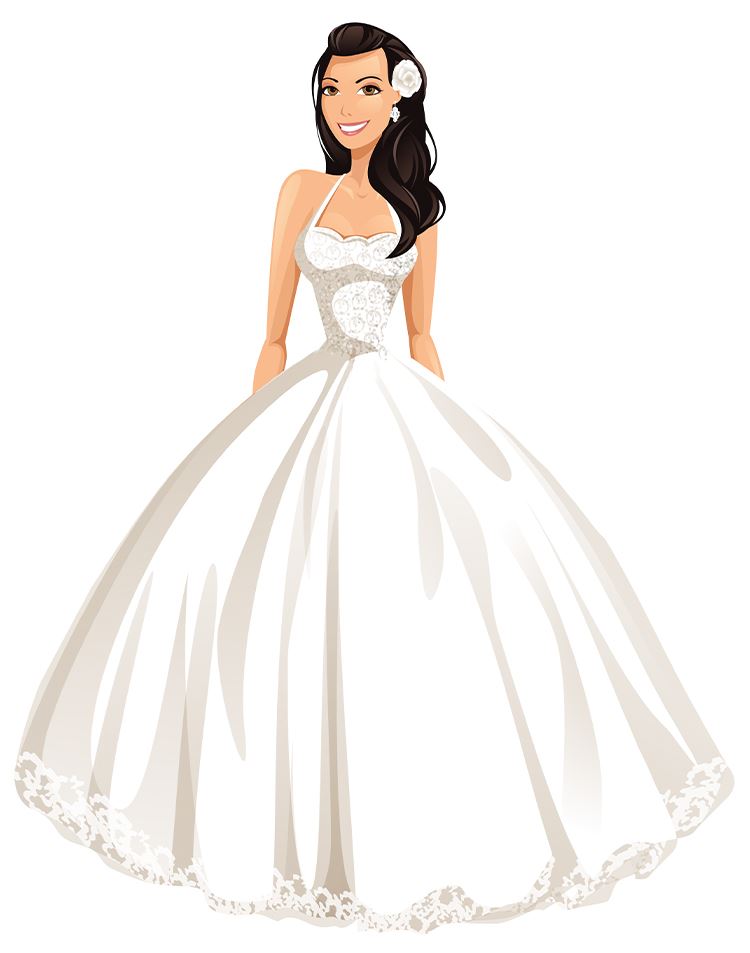
Dress Silhouettes
Ballgown
For the traditional bride, this formal look includes a fitted bodice, a defined was and a very full skirt with lots of volume.
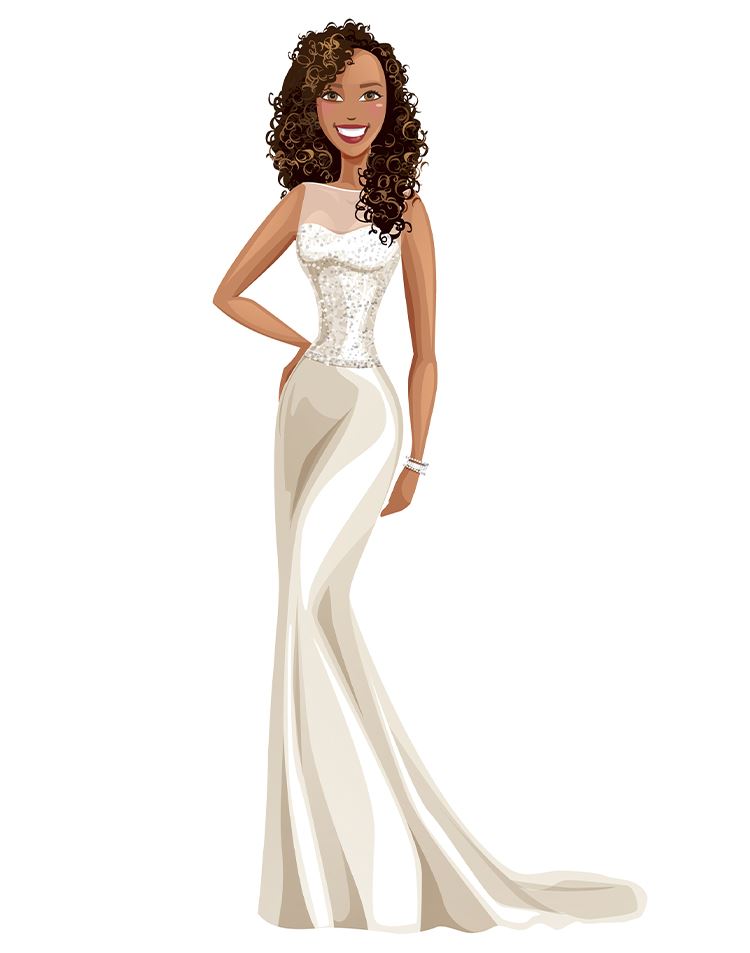
Dress Silhouettes
Sheath
A close-fitting shape that skims the body, straight cut down from the bodice to the end of the skirt. Often includes a back slit for easier movement.
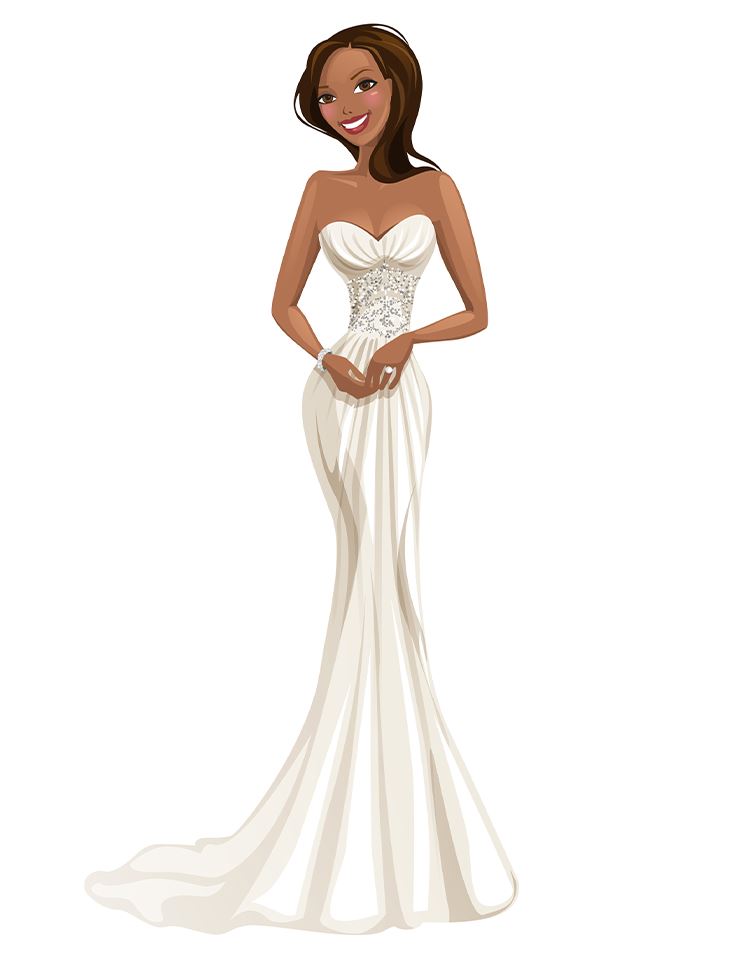
Dress Silhouettes
Fit & Flare
Fitted at the waist and then flaring out at or just below the hips
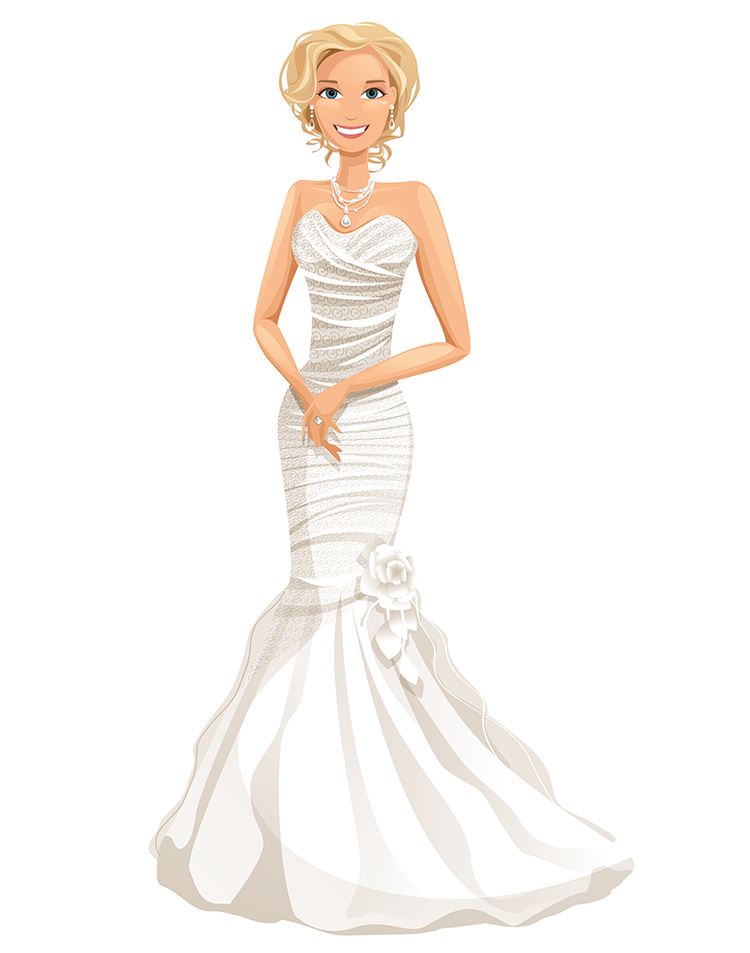
Dress Silhouettes
Mermaid
Form-fitting from the chest to the waist, over the hips and then down to the knees, flaring out dramatic fashion like a mermaid tail
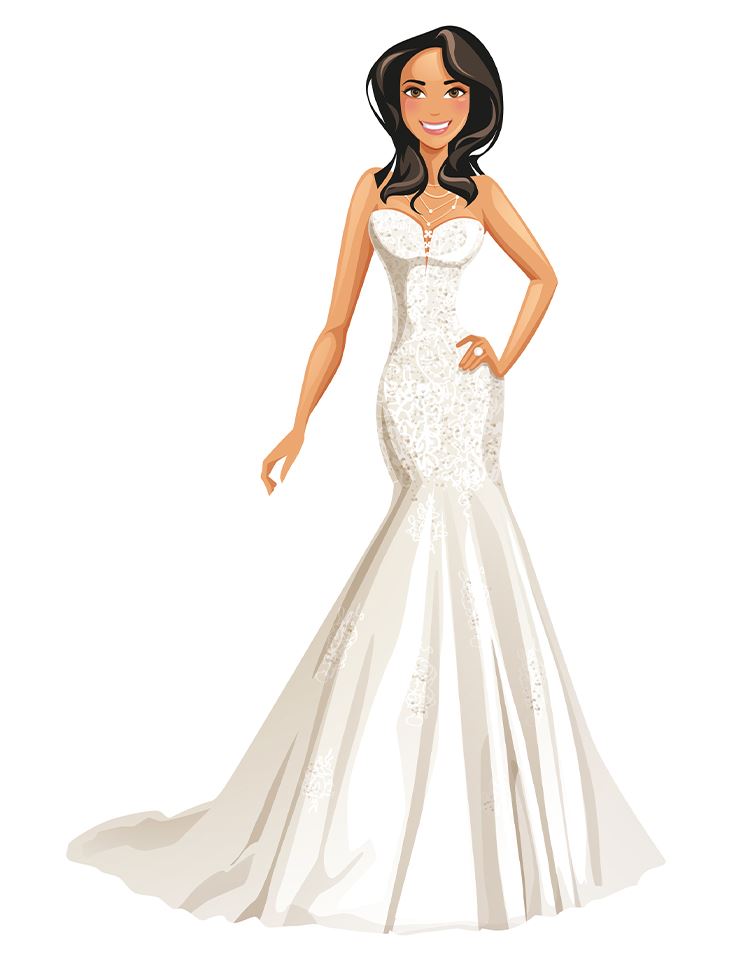
Dress Silhouettes
Trumpet
A close-fitting bodice that follows the lines of the body down through the hips with a gradually flaring skirt that resembles the shape of a trumpet’s bell
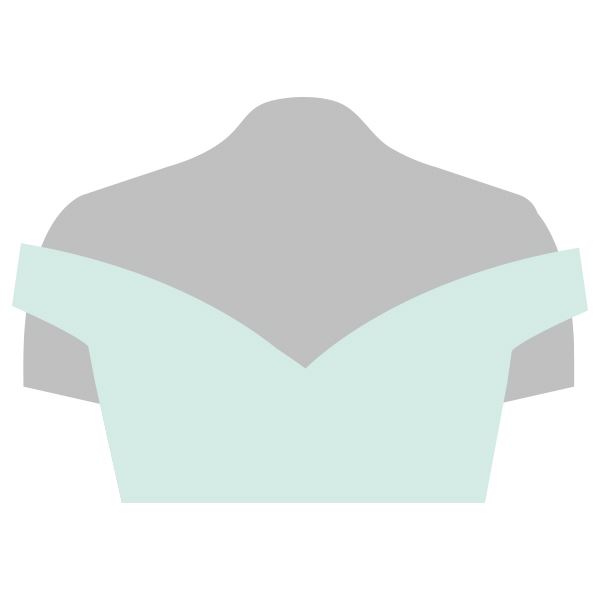
Neckline
Off-the-Shoulder
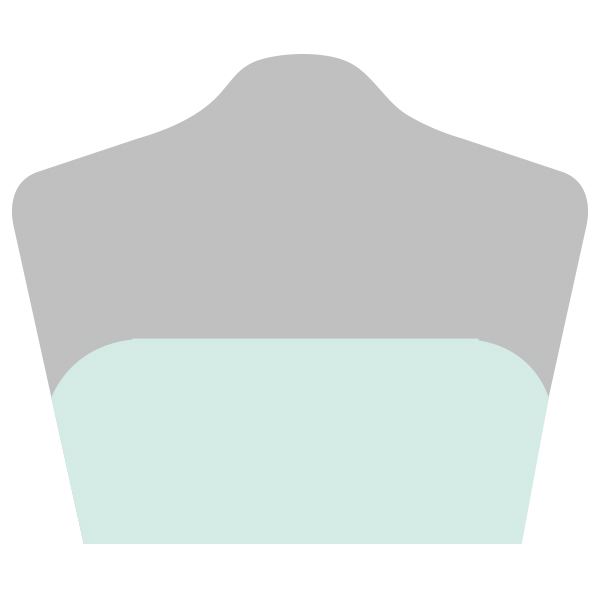
Necklines
Straight

Necklines
Sweetheart
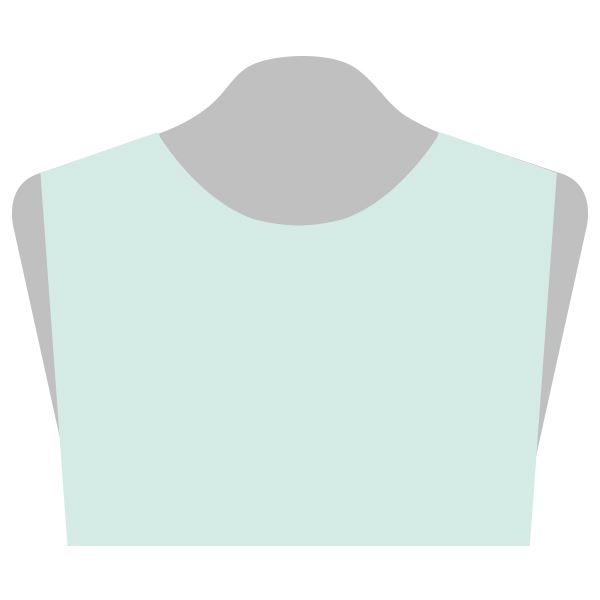
Neckline
Jewel
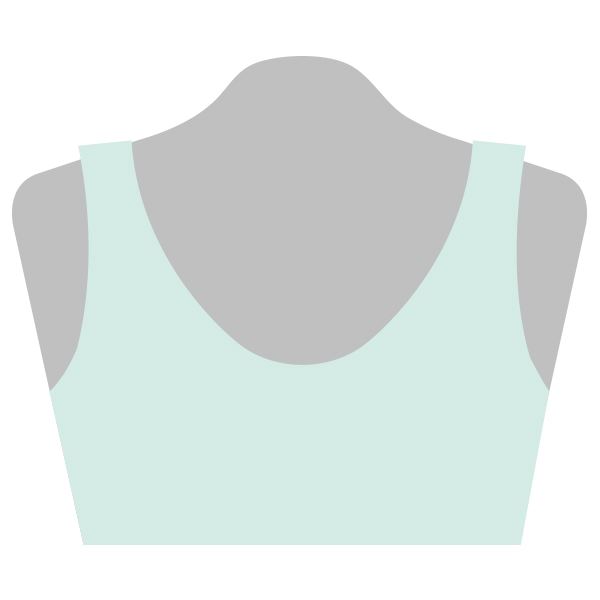
Necklines
Scoop
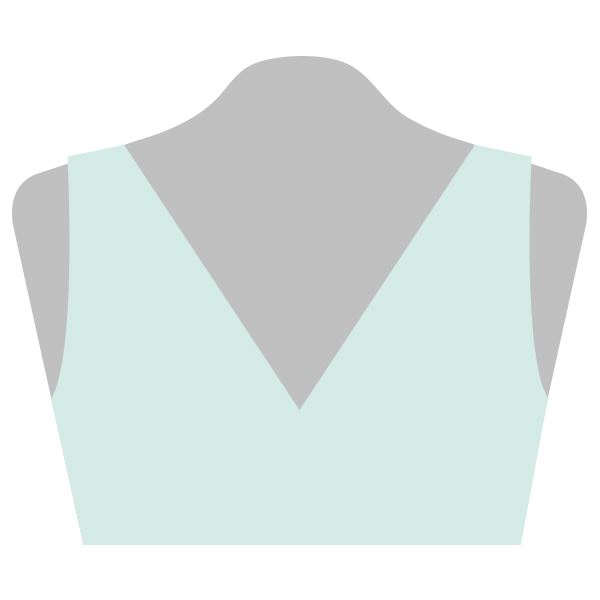
Necklines
V-Neck
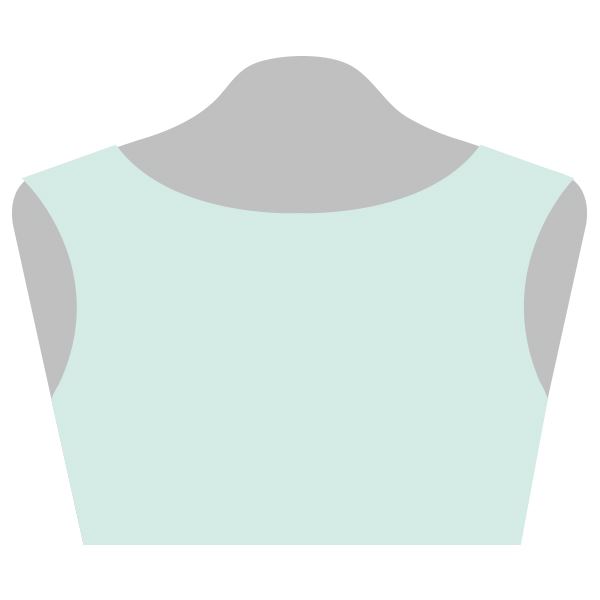
Necklines
Bateau
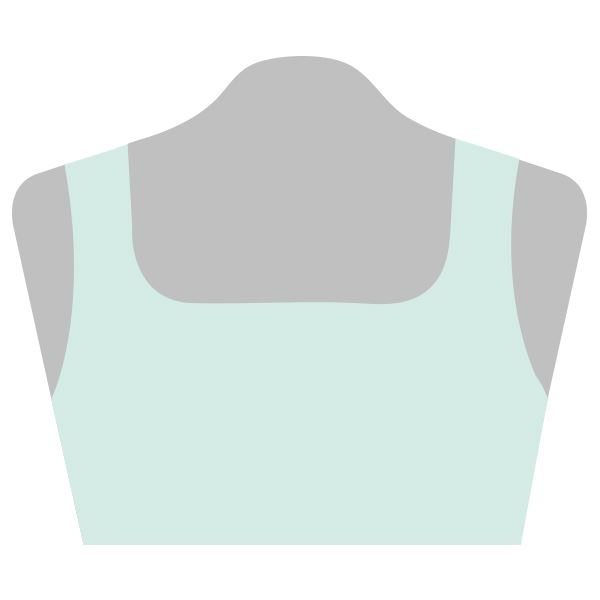
Necklines
Square
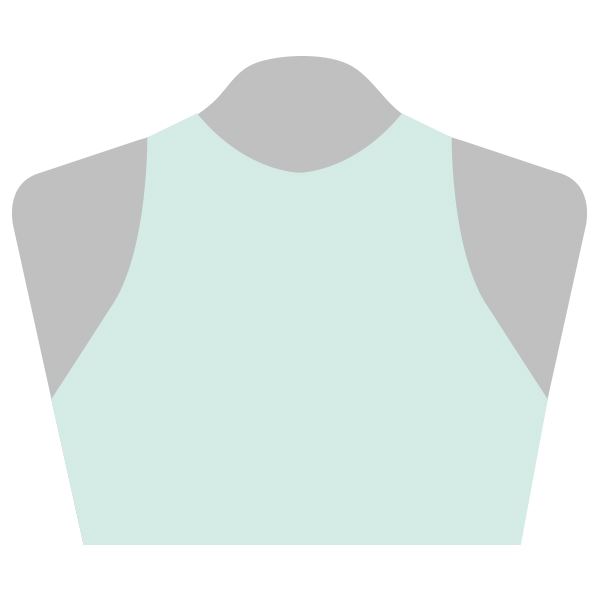
Necklines
Halter

Necklines
Halter Straps
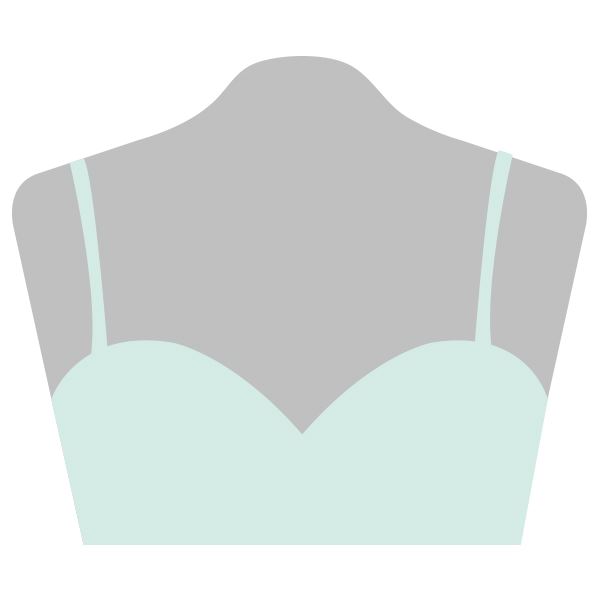
Neckline
Spaghetti Straps

Neckline
Asymmetrical
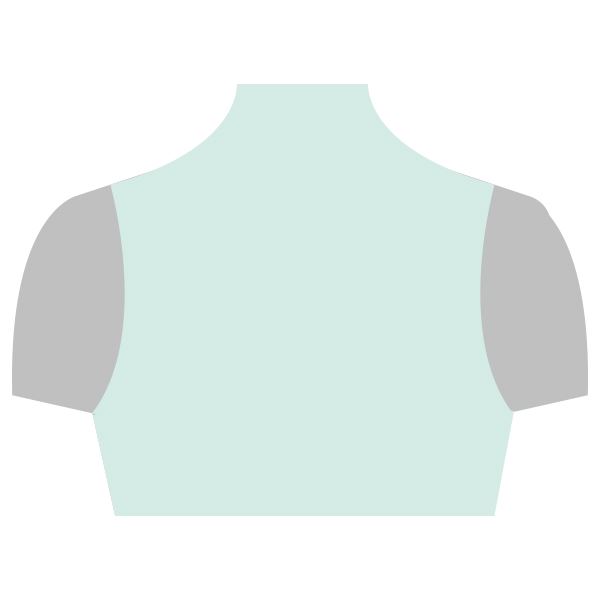
Neckline
High Neck
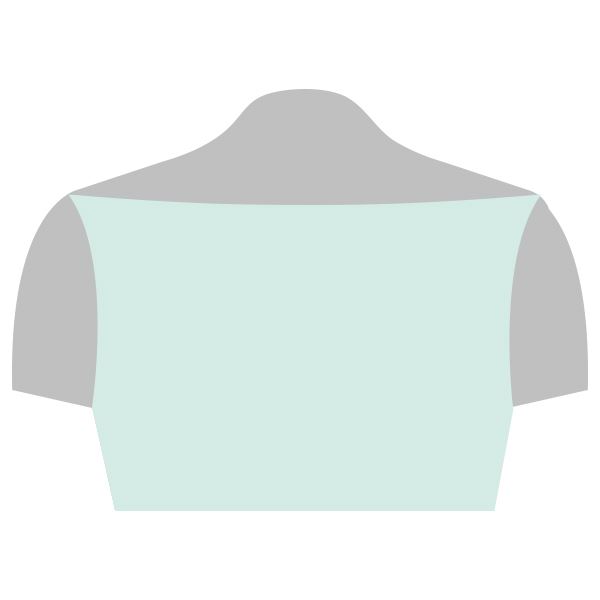
Necklines
Sabrina

Necklines
Queen Anne

Neckline
Illusion
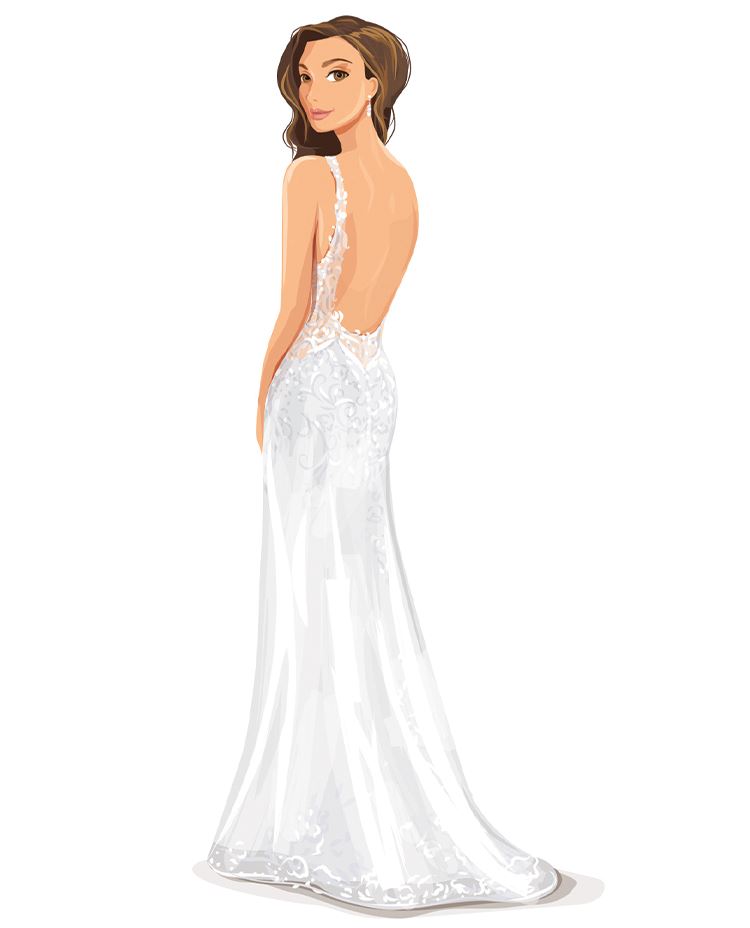
Train Lengths
Brush
A narrow bodice, nipped in waist and an A-shape skirt that gradually widens towards the hem. Universally flattering!
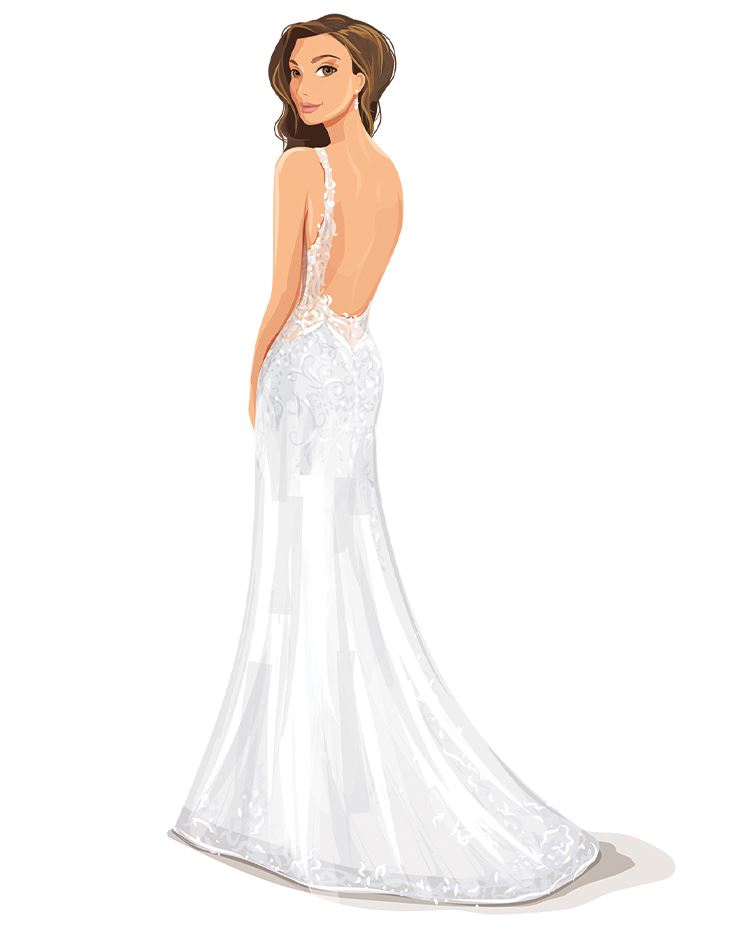
Train Lengths
Court
A short maneuverable train, the court starts at the waist and extends behind you for about 1-2 feet
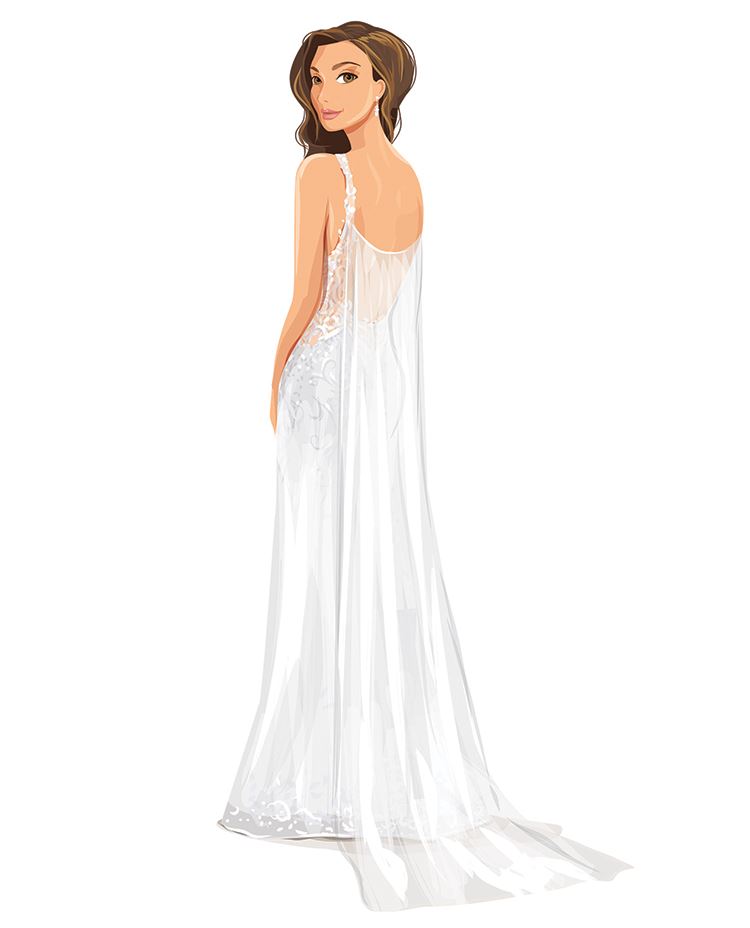
Train Lengths
Watteau
Attaches to the shoulders or the top of your back (yes, like a cape!) and falls to the bottom hem of your dress, but may be designed to reach just a little beyond the hem
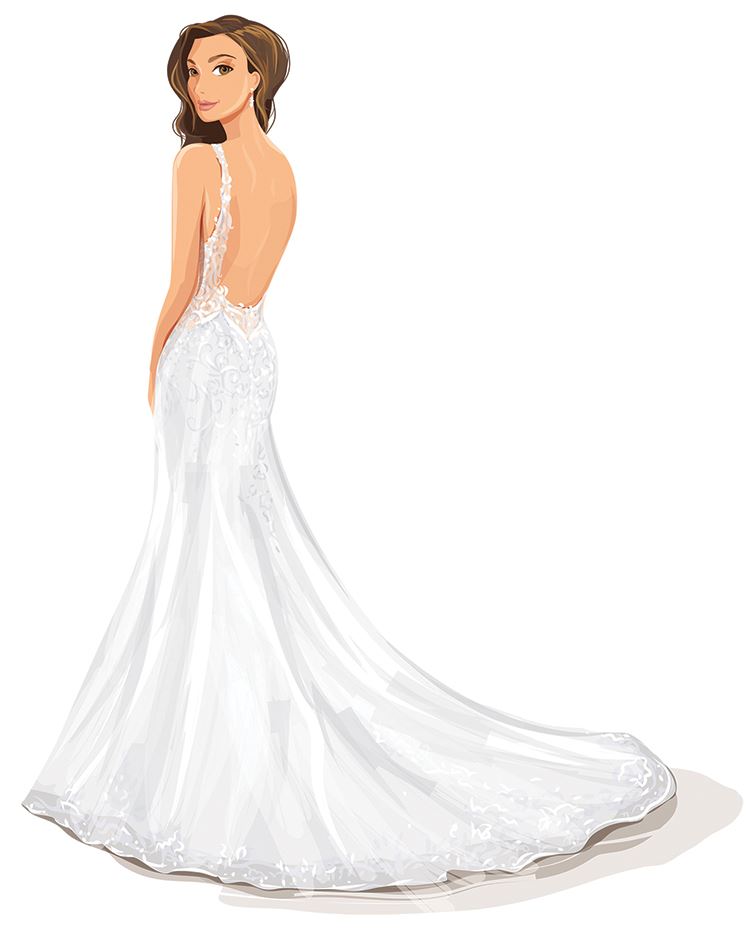
Train Lengths
Chapel
A formal to semi-formal style, the chapel train starts at the waist and extends 3-4 feet behind the gown
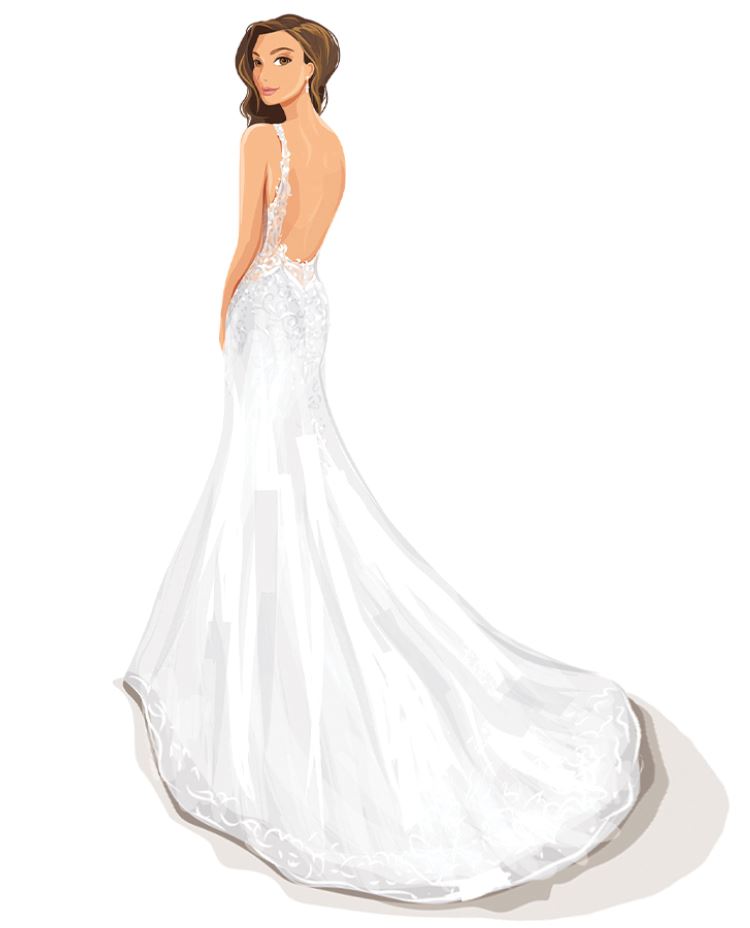
Train Lengths
Semi-Cathedral
A tad more formal than the chapel train, starting at the waist, this train length extends between 5-7 feet behind the gown
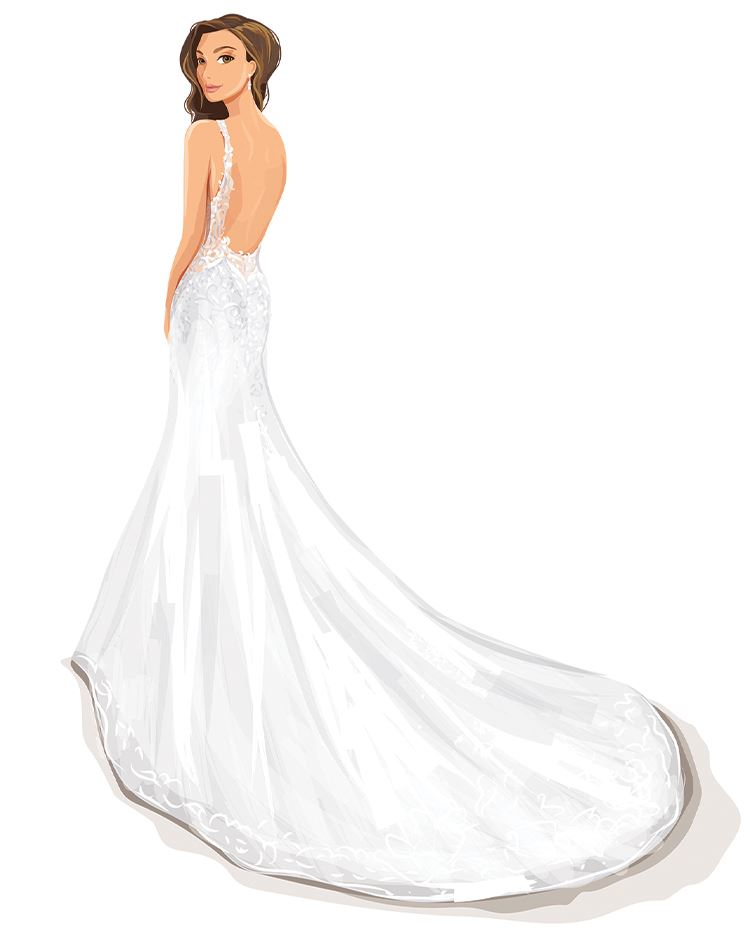
Train Lengths
Cathedral
Begins at the waist and extends dramatically up to 8 feet behind the gown. The train of choice for ultra-formal weddings.
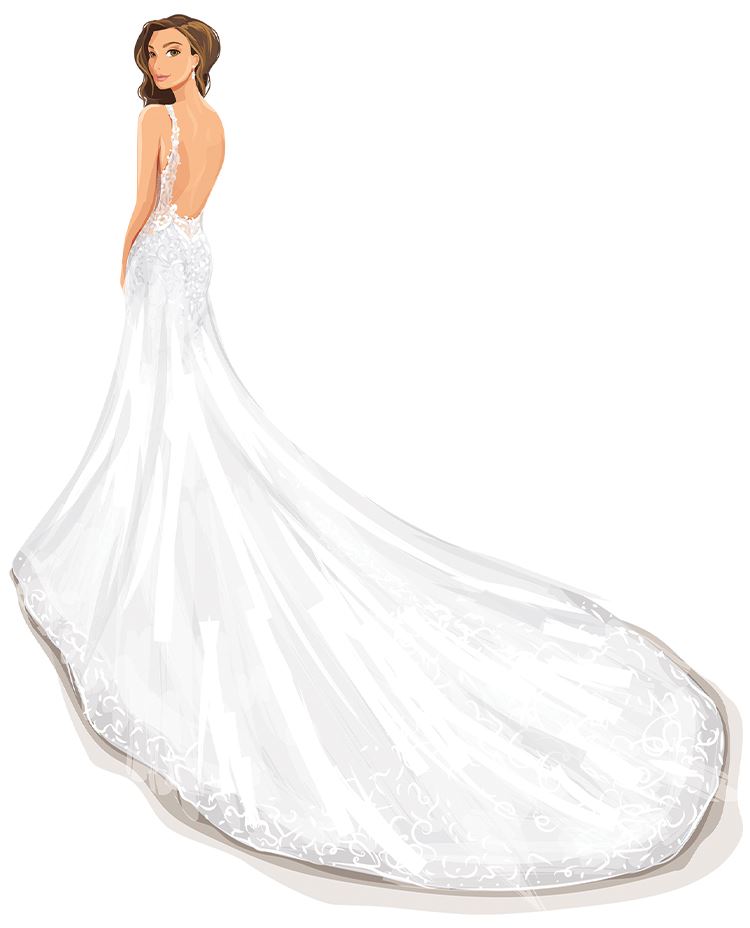
Train Lengths
Royal
Also known as the “Monarch” train, it has been used in royal weddings such as the late Princess Diana’s. An ultra-formal style, the royal train extends ten feet or more from your waist
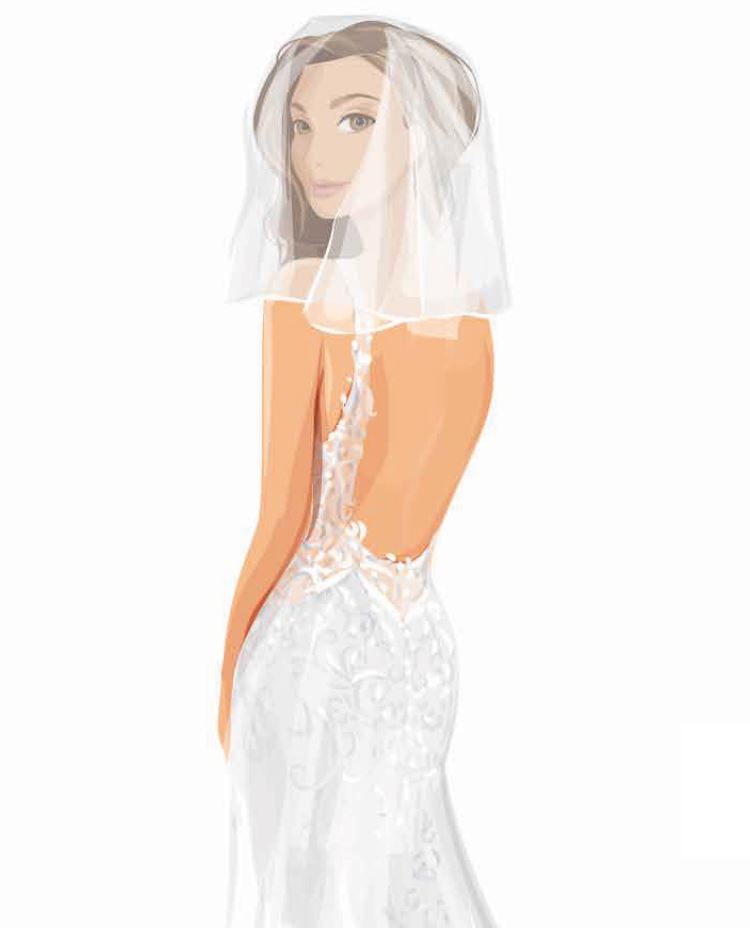
Veil Lengths
Blusher
A single layer short veil worn over the face during the ceremony, and then flipped back over the head after. It can be worn alone and then removed after the ceremony or paired was a layer to a longer veil.
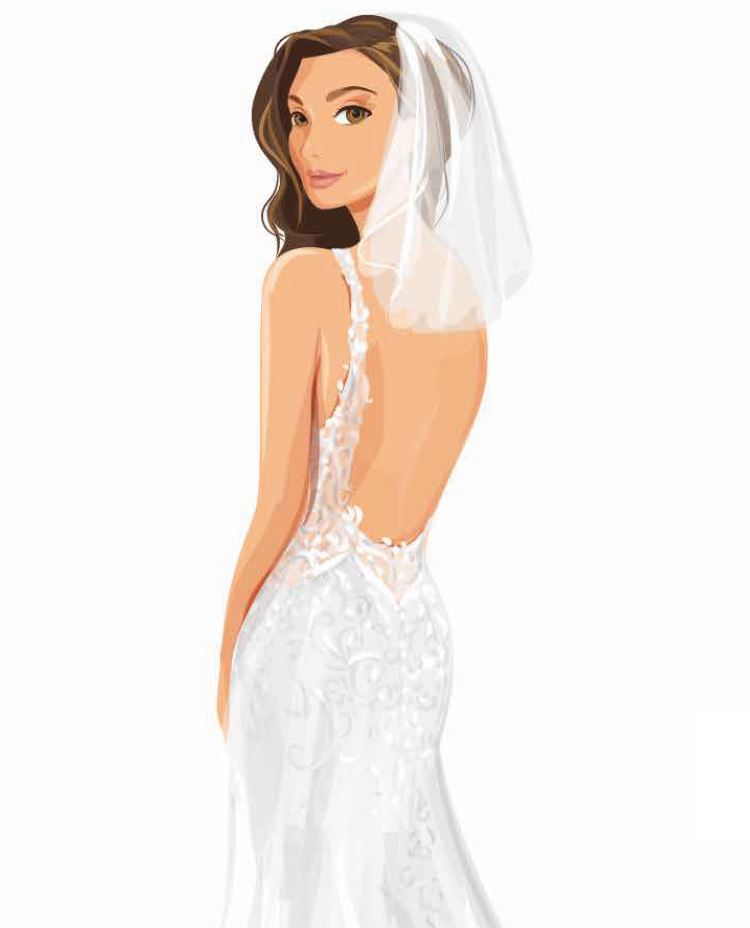
Veil Lengths
Flyaway
As a more informal style, this veil reaches down to shoulder-length or an inch or two below
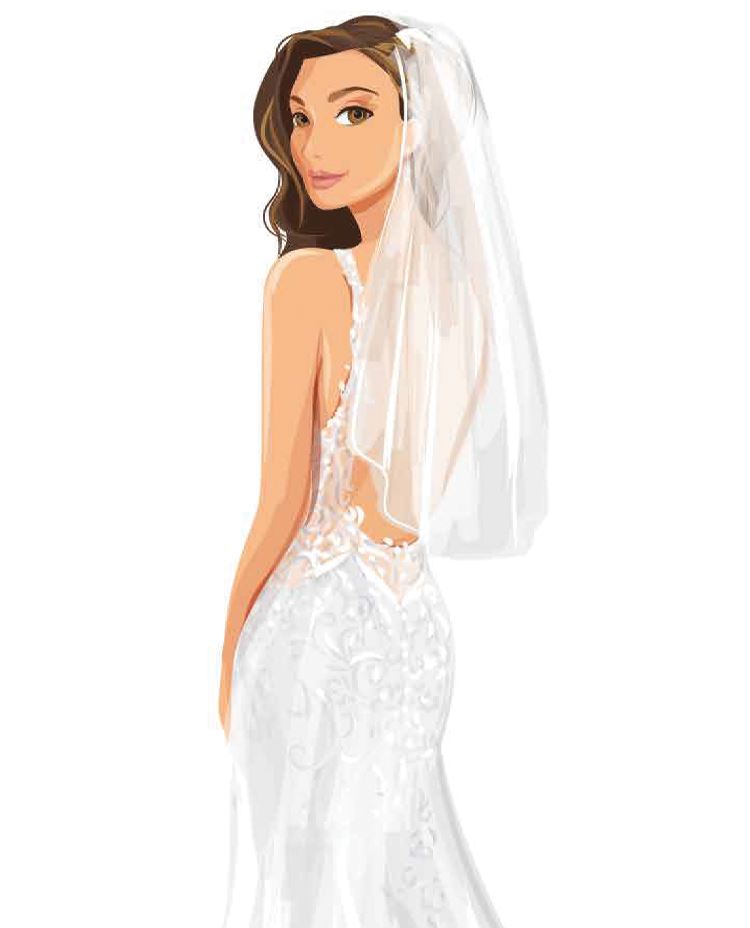
Veil Lengths
Elbow
This veil extends dow to your elbows, a popular look for less formal weddings
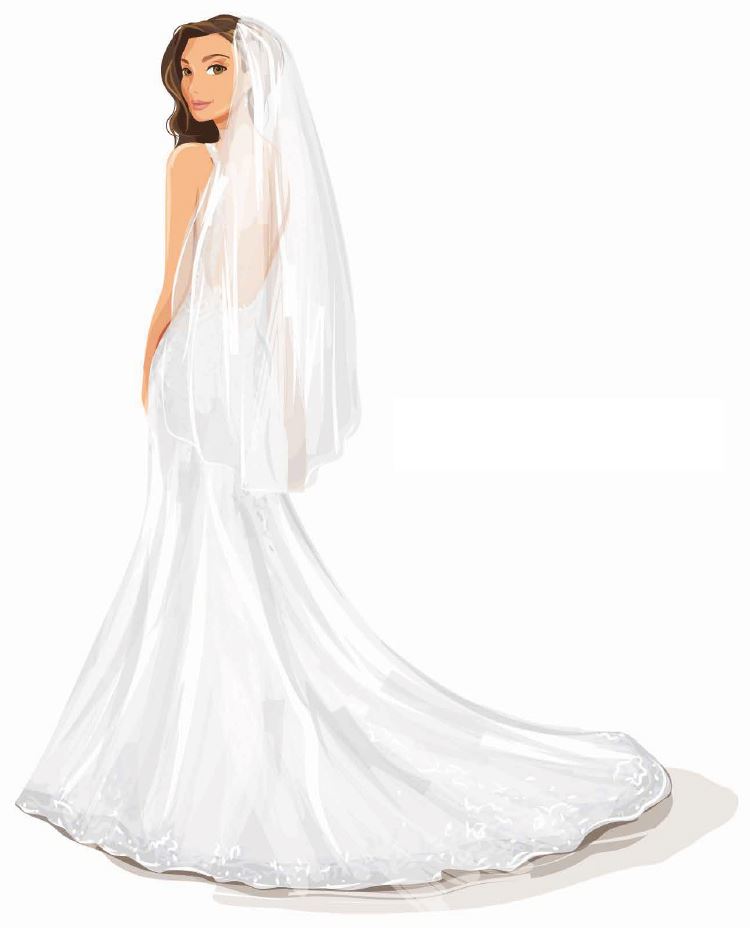
Veil Lengths
Fingertip
Universally flattering and the most popular, this veil extends approximately 36 inches, down to the bride’s fingertips.
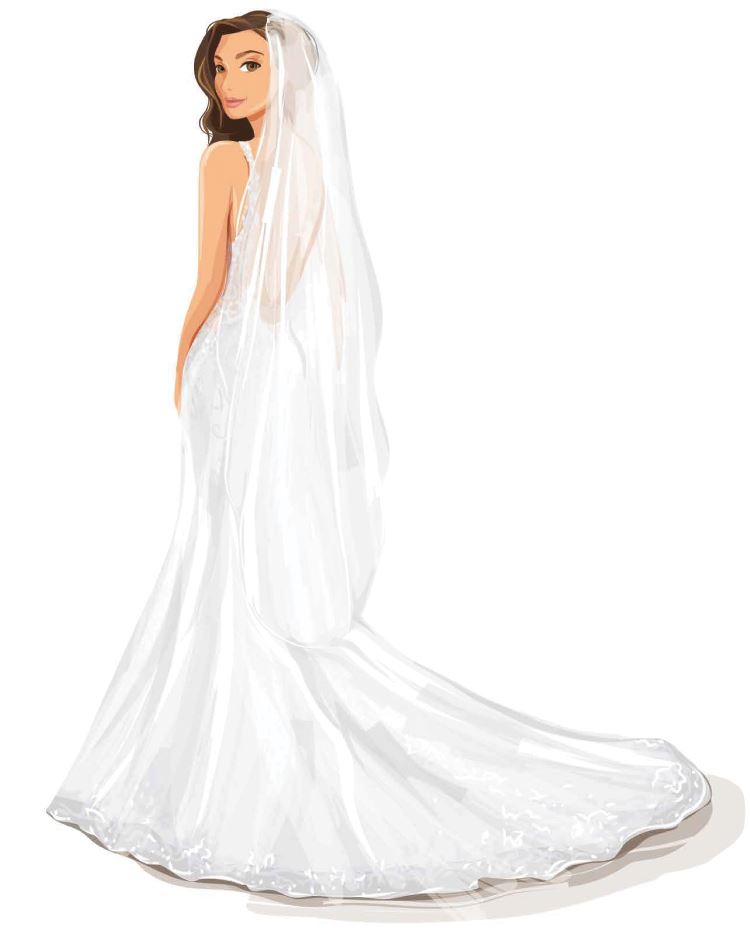
Veil Lengths
Waltz
Also known as the Ballet veil, this veil’s length is about 60 inches, falling somewhere between the knees and the ankles, perfect if you’re fearful of tripping!
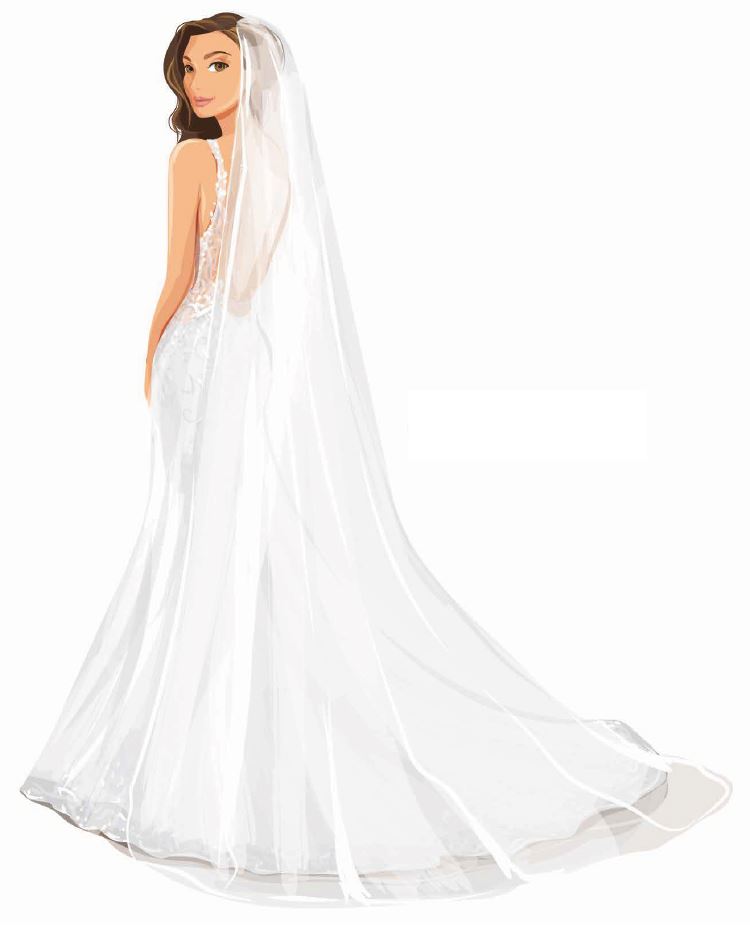
Veil Lengths
Chapel
This formal style of veil extends 2 1/2 yards from the headpiece extending over the train
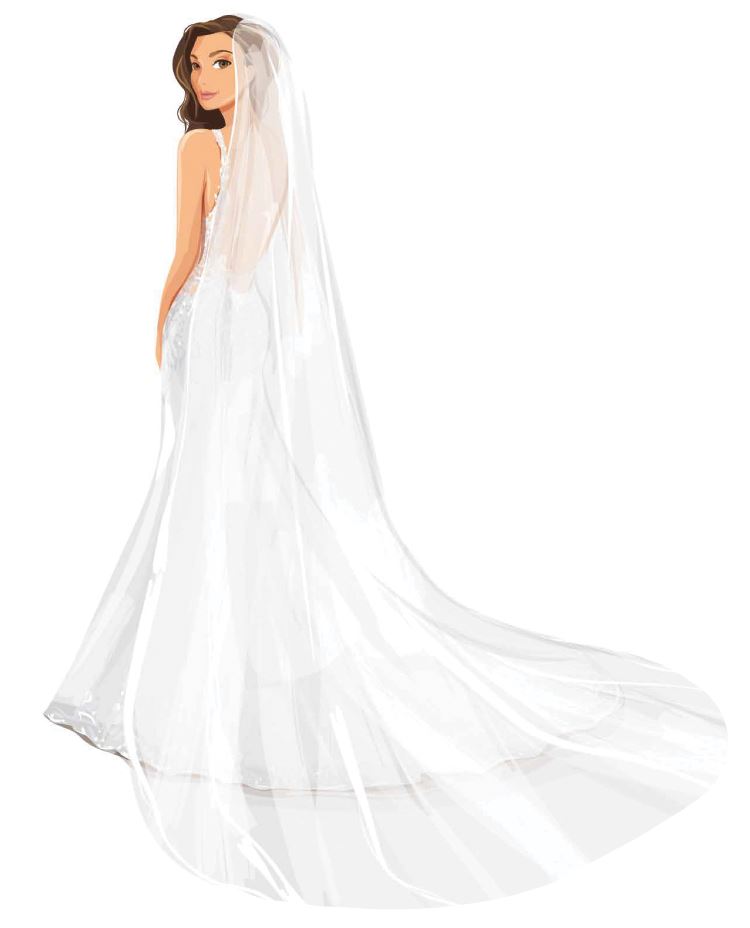
Veil Lengths
Semi-Cathedral
A semi-cathedral train is about halfway between the length of a chapel train and that of a cathedral train. The semi-cathedral train extends approximately 5 to 6 feet behind the gown.

Veil Lengths
Cathedral
The most formal and regal style of veil, a cathedral veil is typically paired with a cathedral-length train. As such the veil extends 3 1/2 yards from the headpiece, with a significant amount trailing behind you as you walk.
GOWN SILHOUETTES
A-line
Narrow at the bodice, with vertical seams that flow right down to a slightly flared-out skirt.
Asymmetrical
The bottom of the skirt, as well as perhaps several layers of fabric comprising the skirt, is cut on a diagonal angle.
Ball gown
A fitted bodice that comes in at the waist and then flares out to a full, floor-length skirt with lots of volume for a more formal and traditional bridal look.
Column
A fitted bodice to a narrow, tailored look over the waist and hips, and straight to the floor. No flares, no poofs, and not as fitted as a sheath. You can do floor-length, or shorten it to calf-length for a less formal wedding.
Empire
A Victorian-style of gown, this one features a fitted bodice with a skirt that starts right at the base of the chest and hangs down in a straight, slim line to the floor.
Mermaid
Form-fitting from the chest to a tiny waist, over the hips and then down to the knees, where fabric flares out in dramatic fashion like a mermaid’s tail.
Sheath
A close, form-fitting dress from bodice all the way down to the skirt. May have a slit at the legs for easier walking.
GOWN LENGTHS
Ballerina
A full skirt that extends to just above the ankles.
Floor length
The skirt reaches just to the floor, the hem extended for a gentle glide obscuring the view of your shoes.
Intermission
Also cocktail length, this one reaches to anywhere between the knees and the ankles, with the most common length being mid-calf.
High-Low
A dual-level dress, the front of the skirt is Intermission length, then extends gradually lower along the sides down to floor length in the back.
Knee-length
The skirt reaches to or just below the knee.
Street length
The skirt reaches an inch or two below the knee.
Tea-length
Also called a cocktail-length dress, the skirt reaches to mid-shin.
SKIRT STYLES
Ball Gown
Fitted at the bodice and waist, and then the skirt poufs out into a bell shape.
Flared
Fitted at the waist, and then flares out into a tulip shape at the hem.
Flounce
A looser skirt that flares out and has a ruffle at the hem.
Front slit
A slit on a frontal side seam, usually along the leg and not in the middle, that allows for movement.
Pannier
Fabric draping on both hips as an extra layer to accent a more sheath-style dress.
Pencil
Skirt hangs straight down, with no flare at the hem or accent at the waist.
Peplum
A very short ruffled skirt layer over a pencil skirt, originally a 1940s style of fun skirt with a bit of flair and movement for dancing. The ruffled layer may be horizontal in shape or extended down in a back V-shape.
Pleated
Varying numbers of pleats running vertically most often along the front of the skirt, but may also extend fully around the skirt. Multiple pleats is called ‘accordion style’ and two larger pleats is called ‘box style.
Side slit
A slit at the side of the leg, allowing for movement.
Straight
The skirt extends straight down, with no flare at the hem. A longer version of the pencil skirt, this skirt might reach to the floor.
Tiered
The skirt is comprised of several overlapping layers of different lengths, usually three layers, but may be more depending on style.
Wrap
The skirt overlaps and wraps at the waist, a more informal style ideal for destination weddings and bridesmaid dresses.
BODICES
Asymmetrical
The fabric covers one shoulder, or attaches over one shoulder with a strap, leaving the other shoulder bare.
Corset
Hugs tight against the body with hook, snap or laced back securing. The bodice can be strapless or strapped, criss-cross strapped or braid-strapped.
Empire
(pronounced ahm-peer) – Fitted at the chest, then fabric hangs straight down under the bustline for a Shakespeare in Love look. A very romantic look, and one favored by pregnant brides and bridesmaids.
Midriff
Reaches just down to below the ribs, baring your stomach.
Princess-line
Lined with two vertical seams that angle over the breastline down to the hem.
Surplice
Fabric is crossed in the front or the back, sometimes twisted for extra effect.
Tank
Just like a tank top, this one is sleeveless with thin or thick straps.
NECKLINES
Bateau
Straps are at mid-shoulders with the fabric reaching in a gentle dip across the chest and back, like an eye shape if viewed from above.
Halter
Like a halter top or bikini top, it ties around the back of the neck. The front might be plain or with a keyhole opening.
High collar
The chest and base of the neck are covered by fabric. Sometimes a high collar is accented with a keyhole cutout at the chest through which a piece of jewelry shows.
Jewel
A rounded neckline sitting at the base of the throat.
Off-the-shoulder
The shoulders and collarbone are bare, with fabric wrapping around the upper arms.
One-shoulder
The neckline angles up toward the one shoulder that features a strap, with the other shoulder bare.
Portrait
Off-the-shoulder, with the neckline scooping down into a more rounded cut.
Queen Anne
With shoulders covered and a high back, the front is shaped like the bottom of a heart.
Sabrina
See bateau, but starts two inches higher for a more demure look.
Scoop
A rounded neckline, like the bottom half of a circle.
Strapless
No straps. The neckline can go straight across, or dip down in a curved design.
Square
Your straps come straight down to a vertical line of fabric across your chest, presenting a square shape.
Sweetheart
Rounded fabric over each breast, meeting in a V-neck point in the middle. Its heart shape is the basis for its name.
V-neck
The fabric extends downward in an angled V-shape at the top of the chest or lower to show some cleavage.
SLEEVES
Balloon
Full, round and balloon-shaped over the shoulder and upper arm, then narrowing over the lower arm and wrist.
Bell
Fitted over the bicep and then flares slightly outward (like a bell) over the forearm. This detail adds interest and something special to a simpler, classic and unadorned gown.
Bishop
Puffs a bit at the shoulder, then expands fuller over the arm, then gathers at the wrist. A very casual and natural look.
Cap
A short extension to a sleeveless look, offering a ‘pouf’ of fabric over the shoulder, gathering under or against the very top of the arm.
Dolman
Also termed the ‘batwing’ style, the fabric begins very wide at the ribcage or waist, then narrows at the wrist.
Fitted point
The long, fitted sleeve extending to a point-shape at the wrist or top of the hand.
Gauntlet
A pouf at the top of the arm, then a separate section that covers the entire arm, coming to a point at the top of the hand. The bottom section may be a full-length glove for removal later.
Gigot
A large, round pouf over the shoulder, then narrowing over the arm to encircle the wrist.
Illusion
Sheer netting-type material that forms a see-through sleeve yet offers ‘the illusion’ of coverage. If you’re not happy with your upper arms, this type of sleeve may be for you.
Juliet
A full sleeve extending down to the wrist, with a ‘puff’ accent at the shoulder and upper arm. Again, see the illustration.
Off the Shoulder
Wraps across the upper arms, leaving the shoulders bare.
Petal
The short sleeves are made of two to three different panels that overlap to look like a tulip in bloom.
Poet
Fitted close over the upper arm, and then flares out widely from the elbow, with long ruffles at the wrist length. It’s called the ‘poet,’ because it’s reminiscent of the Shakespearean era. This sleeve has a heritage feeling, movement and flow, and is a romantic accent to a traditional gown.
Pouf
A larger cap sleeve, ending lower on the arm.
Spaghetti straps
A strapless dress is held up by a skinny strap or fabric band over each shoulder.
Tee shirt
Extending three to four inches below your shoulders, this sleeve type resembles the traditional tee shirt sleeve cut.
Three-quarter
Extending from the shoulder to mid-forearm.
Tulip
A petal-shape, with several flaps of fabric overlapping to resemble a flower. Also called the ‘criss-cross sleeve.
TRAINS
Brush
Reaches just to the floor beneath your dress hem, ‘brushing’ the floor as you walk. This style works with virtually all wedding types as it can be formal to less formal, appropriate for outdoor weddings for its lack of drag, and fine for beach weddings. Brides say they can move most easily in a train of this type. Walking, turning and moving is not a problem during the ceremony, and they’re happy not to have to carry around six pounds of bustled fabric all night.
Castillion
A French-inspired, very long train, often over 10 feet long.
Cathedrale
Attached at the waist and extends dramatically 6-8 feet behind the gown, as the train of choice for many ultra-formal weddings.
Chapel
A formal to semi-formal style, the chapel train attaches at the waist and extends 3-4 feet behind the gown.
Court
A short and maneuverable train, the court attaches at the waist and extends behind you for 1-2 feet.
Royal
Also known as the ‘Monarch’ train, since it has been used in royal weddings such as the late Princess Diana’s. An ultra-formal style, the royal train extends ten feet or more from its attachment position at your waist.
Semi-cathedral
Extending for a length of 5-7 feet behind the dress, this semi-formal to formal train is a mix of chapel and cathedral-length.
Watteau
Attaches at your shoulders or the top of your back (yes, like a cape) and falls most often to the bottom hem of your dress, but may also be designed to reach just a little bit beyond the hem.
FABRICS
Batiste
A lightweight cotton fabric, in a thin grading to be almost transparent.
Brocade
A fall and winter appropriate woven fabric, heavier in weight with raised floral or ribbon design.
Charmeuse
A lightweight, semi- satin fabric known for its softness, as a blend of silk or rayon.
Chiffon
A very soft, delicate fabric in silk or rayon, extremely sheer and thus often layered for modesty.
Crepe
A thin, lightweight fabric with a rippled texture compared to a citrus fruit, often in silk or polyester.
Crepe de Chine
A version of crepe made from silk and featuring tiny bumps as texture in the fabric.
Damask
A lighter-weight silk, linen, cotton, or synthetic fabric featuring woven patterns of fruit, flowers, or other motifs.
Duchesse Satin
A light blend of silk and rayon (or polyester) that resembles a satin finish.
Dupioni
Most often 100% silk, a thicker, shinier version of shantung.
English net
Not to be confused with tulle, this netting is softer and has a bit of stretch to it.
Faced satin
A soft version of satin, made from 100% silk.
Gabardine
A firm fabric with a diagonal pattern to the stitching.
Georgette
A sheer, light blend made of polyester or silk with a less-than-smooth, non-shiny texture by design.
Illusion
Sheer, thin netting often used for sleeves and as a modesty cover for décolletage.
Jersey
A very soft knit fabric, most often 100% cotton as an informal fabric at weddings.
Moiré
A heavy silk taffeta with a wavy pattern, as well as a watermark pattern woven into it.
Organdy
Sheer and transparent, but firmer and stiffer than other fabrics.
Organza
A stiffer, heavier version of chiffon, popular for skirts due to its flowing nature.
Peau de Soie
A soft silk which is actually a heavier, non-shine satin with slight ribs and texture.
Rayon
A step below silk, with a bit more stretch.
Satin
A smooth fabric with lots of shine, woven from silk or polyester, with notable shine on one side of the fabric and a duller texture on the underside.
Shantung
Woven from silk, shantung resembles dupioni, but it of a much lighter weight and texture.
Silk
The most popular fabric for wedding dresses, with softness and shine.
Silk Gazar
A layered silk organza, often in four layers.
Silk Mikado
A heavier, thicker form of blended silk, often a choice for cooler-weather weddings.
Taffeta
Thicker fabric with movement, with slight ribbing in the weave.
Tulle
Silk, nylon, or rayon semi-sheer netting, most often seen in veils and crinolines.
Velvet
A thick, soft fabric with a short, felted pile and may be made from silk. Velvet with more of a matte or patterned design may be crushed velvet.
LACES
Alencon
A popular, delicate design of lace including images of flowers and arches on netting, with the edges embroidered with or without accenting such as beading.
Battenberg
Floral or geometric designs created by forming loops of linen connected by threadwork.
Chantilly
Intricate floral, scallop and ribbon designs set on a fine net background.
Duchesse
Featuring floral or lace arch and scroll designs, often with raised stitching for more texture.
Guipure
Large, repetitive patterns of florals or geometrics set in circular pattern, connected by delicate threadwork.
Lyon
A lighter-weight version of Alencon, with a thinner cord.
Schiffli
A very lightweight lace with intricate embroidery, often floral, with intertwined design and connecting threading.
Spanish
Based on a standard net background featuring a rose motif.
Venice
Also known as ‘Venise,’ a strip of embroidery-style heavy lace not attached to netting, often in floral and geometric designs. This type of lace is often used to be cut into appliqués.
HEADPIECES
Backpiece
Instead of a traditional headpiece or tiara, a hair clip or comb is attached to the back of the head, and the veil is attached to that.
Bunwrap
A circular clip or band that contains hair styled into a bun, or encircles part of an up-do.
Comb
Another term for a haircomb, a simple or jeweled comb may be used as the sole hair décor, or as the attachment for a veil.
Crown
As the name implies, a small and simple or larger and more ornate, jewel-studded full crown that attaches to your head via hair combs or clips. Your personality will decide the size – small and delicate for a touch of regal look, or large and dramatic.
Half-crown
A half-circle crown of fabric-and-comb headpiece that is held in place by obscured or jeweled hairpins.
Headband
A full headwrap or slide-on clip, the headband may be solid fabric such as a shiny satin, or a pearl or crystal-adorned width.
Juliet cap
A circular cap that fits over the top of your head, either simple or adorned, worn either alone or as the attachment for a veil. The Juliet cap is named for its style reminiscent of Shakespearean plays.
Profile
A jeweled piece, much like a barrette in wide or thin design, attached appropriately to your hairstyle, most often to the side of your hair’s part.
Snood
A patterned, lace or crocheted ‘bun holder’ that fully encases and secures an up-do.
Tapered headband
The middle of the headband is wider than the narrower ends of the headband.
Tiara
A partial crown piece affixed to the crown of the head, often held in place by combs on the sides and with additional pins. Tiaras may be thin with minimal adornment, or much larger and ornate, featuring gemstones, crystals, pearls or tiny ceramic flowers.
Wreath
A full circle made from flowers and greenery, which also may be adorned with beads and crystals.
VEILS
Ballet
Falls to a length between the knee and the ankle, providing great movement.
Blusher
This is a single layer, shorter veil that is worn over the face during the ceremony, and then flipped back over the head after the ceremony. It can be worn alone and then removed after the ceremony, or paired as a layer to a longer veil.
Cathedrale
The most formal style of veil, cathedrale is usually paired with a cathedrale-length train. As such, the veil extends 3 ½ yards from the headpiece, with a significant amount trailing behind you as you walk. Stylists use the word ‘regal’ to describe this veil.
Chapel
This formal style of veil extends 2 ½ yards from the headpiece, extending over the train.
Double-tier
Two layers of veil, one shorter length set over a longer length. This may be a combination of a blusher or fingertip and a longer veil.
Elbow
This veil extends down to your elbows, a popular look for less formal weddings where you still want the bridal touch.
Fingertip
This veil extends down to your fingertips when your arms are hanging straight. This is the most versatile and most popular veil length for its ease of mobility.
Flyaway
As a more informal style, this veil reached just down to shoulder-length or an inch or two below your shoulders.
Fountain
A gathering at the crown of the head, creating a cascading effect around the face. This veil is most often seen in shoulder- or elbow-length to maximize volume, but may also be created in fingertip length.
Mantilla
This Spanish-style of evil is traditionally circular in shape, made of lace, tulle or chiffon, and is most often worn draped over the head, clipped into place at the temples with jeweled pins or combs, cascading elegantly over the shoulders and down the back. Modern style include a tulle or chiffon veil with intricate lace designs around the edges, and the length may extend to cathedrale length as well.
Pouf
The pouf veil is made from a gathering of veil material where it connects to the headpiece, creating a natural ‘pouf’ to the shoulder-length veil. Stylists use the word ‘playful’ to describe this veil.
Waltz
Reaches from your headpiece to the hem of your dress.
GLOVES
Opera-length
Full-length gloves that reach from your fingertips all the way up to near your shoulder, perfect with a strapless or sleeveless dress. May be plain or in 6-, 8- or 10-button lengths as accents up the arm.
Elbow-length
Reaching from your fingertips to just above or just below your elbow.
Wrist-length
Reaching from your fingertips to just above or just below your wrist.
Open finger-gloves
These come in any length as mentioned above, but your fingers are exposed. Most often, the glove attaches via a ring on your middle finger, to provide the smooth silk or lace covering of the glove with full use of your fingers for the ring exchange and handling the candle taper, or signing a Ketubah, etc.
Opera-length
A full, long glove that extends to the top or middle of the upper arm, most often with 12-16 buttons.
Short
The end of the glove is two inches above the wrist, also called a ‘one-button glove.’
ADDITIONAL GOWN ELEMENTS
Appliques
Fabric or lace cut-outs affixed to the gown, train or veil.
Beading
Refers to the embellishments created by gluing or sewing crystals, bugle beads, pearls, gemstones or other accents onto the bodice, hems or other elements of the ensemble.
Border trim
Embellishments added to bodice edges, straps, and hems, in ruffled, scalloped or braided designs.
Bustle
Gathering the train up to attach securely via obscured clips or hooks at the back of the dress, to present an attractive gathered effect above the gown’s skirt.
Crinoline
The layers of tulle or netting worn under the gown’s top layers to add extra volume to a full skirt. Crinoline may be attached to the dress, or added as a separate undergarment.
Edging
A narrow trim for hems, straps or veils, created from lace, embroidery, beading, or other accents.
Embroidery
Hand- or machine-stitched decorative designs created on the gown, bodice, train, or veil. Patterns vary from straight lines to intricate designs.
Paillettes
In the sequin family, paillettes are larger round accents sewn on fabric at the top and dangling to provide movement.
Ruching
Gathers or pleats in fabric, often seen at the waistline.
Seed pearls
Tiny real pearls used to embellish gowns, trains, veils and other elements. Pearls in irregular shapes are called baroque pearls.
Shirring
Fabric that has been gathered up into 3 or more parallel lines, often extending down vertically under a waistline, or used as accent on shoulder straps.
